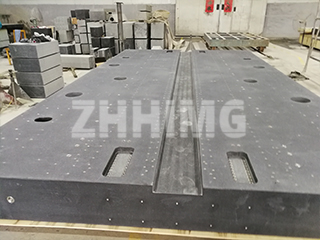Professional granite straightedges are precision measuring tools machined from high-quality, deeply buried natural granite. Through mechanical cutting and meticulous hand-finishing processes including grinding, polishing, and edging, these granite straightedges are produced for checking the straightness and flatness of workpieces, as well as for equipment installation. They are essential for measuring the flatness of machine tool tables, guides, and other precision surfaces. A key feature of these tools is the mutual parallelism and perpendicularity of their measuring faces. This leads to a common question: Are the two end faces of a standard granite straightedge parallel?
The unique physical properties of granite give these straightedges advantages unmatched by tools made from other materials:
- Corrosion & Rust Proof: As a non-metallic, stone-based material, granite is completely immune to acids, alkalis, and moisture. It will never rust, ensuring its precision remains stable over time.
- High Hardness & Stability: The granite used for precision tools must have a Shore hardness of over 70. This dense, uniformly structured stone features a minimal coefficient of thermal expansion and has undergone natural aging, resulting in a stress-free, non-deforming structure. This allows granite straightedges to achieve and maintain higher accuracy than their cast iron counterparts.
- Non-Magnetic & Smooth Operation: Being non-metallic, granite is naturally non-magnetic. It offers smooth, friction-free movement during inspection without any sticky feeling, is unaffected by humidity, and provides exceptional flatness.
Given these outstanding benefits, it’s important to understand the precision faces of a standard granite straightedge. The primary accuracy is applied to the two long, narrow working faces, ensuring they are perfectly parallel and perpendicular to each other. The two small end faces are also precision-ground, but they are finished to be perpendicular to the adjacent long measuring faces, not parallel to each other.
Standard straightedges are manufactured with perpendicularity between all adjacent faces. If your application requires the two small end faces to be strictly parallel to each other, this is a special requirement and must be specified as a custom order.
Post time: Aug-20-2025

